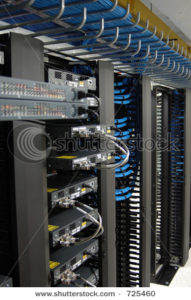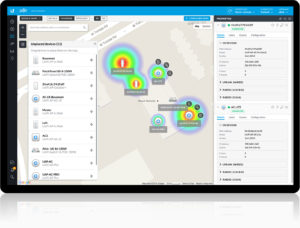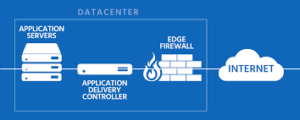In the age of connected world – the networking forms the backbone of new economy.
Our in-depth knowledge and proven process has helped many organization to implement need appropriate solutions.
Structured Cabling & Connectivity
Statistics shows that 70% of network failure is due to the cabling problem. The life  of structured cabling is much more than that of computer hardware, software & networking hardware and it is practically not possible to change the cabling frequently. Hence cabling forms the basic foundation of IT infrastructure within an organization. The Cabling solution is offered using copper and Fiber optic as a physical media and its associated termination & patching components.
of structured cabling is much more than that of computer hardware, software & networking hardware and it is practically not possible to change the cabling frequently. Hence cabling forms the basic foundation of IT infrastructure within an organization. The Cabling solution is offered using copper and Fiber optic as a physical media and its associated termination & patching components.
Copper solution
Unshielded Twisted Pair (UTP) is the media of choice where the environment does not contain a high level of ambient noise. The UTP channel has proven itself as the Universal medium that will carry all of our current communication applications such as voice, RS232/RS485, 100 and 1000 Base-T Ethernet, Video and beyond.
 STP/FTP media applications are generally used in high ambient noise environments such as airports and factories, EMI sensitive environments such as laboratories and hospitals and high security environments such as defense installations where security may be compromised by spurious emissions.
STP/FTP media applications are generally used in high ambient noise environments such as airports and factories, EMI sensitive environments such as laboratories and hospitals and high security environments such as defense installations where security may be compromised by spurious emissions.
Fiber Optic solution:
Optical fiber truly is the ultimate communication media. It supports enormous bandwidth and is completely immune to EMI and RFI. It does not require special routing in the office and is becoming more affordable.
Optical fiber is available in two fundamental forms – singlemode and multimode. Traditionally singlemode has been used for long distance trunks, whilst multimode has been used for short distance communications. Fiber cable used for indoor or outdoor applications would have 4 core to 96 core to support diverse project environments and end equipments.
OEMs: Commscope, AMP, Molex, R&M, Belden
LAN Switching
 To support the growing demand for data, voice and video applications, faster processing speed of servers and workstations – the organization has to have switching equipment which can transmit packets from one end to other end with minimum latency and maximum throughput.
To support the growing demand for data, voice and video applications, faster processing speed of servers and workstations – the organization has to have switching equipment which can transmit packets from one end to other end with minimum latency and maximum throughput.
Enterprise switching solutions involve a three tier architecture – Core, Distribution and Access. Core switches offer high availability, advanced routing, throughput etc., distribution switches offer secure VLANs, QoS for different applications and aggregation of departmental networks., Access switches provide dedicated secure connectivity to workstations.
Based on the management and control functionalities – switches are categorised under
> Web managed/ smart switch > L2 managed switch > L3 managed switch
OEMs: Cisco, HP, Extreme Networks, Allied Telesis, Dlink, Netgear.
Wireless & Mobility
With rapid proliferation of mobile devices like laptop, smart phone & tablet PC – people are no more restricted to their workplace. Boundary less network and seamless roaming – is the necessity for today’s workforce. The advantages of faster and easier installation, support for data, voice & video, long-term cost benefits in dynamic environments – are driving more adoption of wireless technology.
Access points are used for extending the wireless coverage of an existing wired network.. An AP is a shared medium, therefore it acts like a hub and every device compete for the bandwidth in it.
Given the unpredictable nature of WiFi spectrum, RF interference , radiation pattern of client device – traditional unmanaged WiFi access point – face big challenges in delivering satisfactory performance in handling multimedia(voice, data & video) traffic in enterprise network. With a given industry standard(802.11n/ac-wave1,wave2) wireless chipset, it is the internal antenna design of AP which makes difference for coverage & performance.
We provide wireless solution using Managed Access Point designed with multi-directional antenna pattern (smart combination of directional and omni-directional antennas) that can dynamically create a beam of RF energy & follows the client based on the analysis of client traffic received.
In order to support growing IoT requirements, next gen. APs are powered by Artificial Intelligence(AI) and supported with ZigBee, Bluetooth and other 3rd party protocols.
Managed wireless solution uses hardware or software based management platform or Wireless Controller– for centralized RF management, load balancing, access & security policies.
We offer access points to fit your budget, performance requirement or deployment scenario. Wireless solution deployed indoor or outdoor – can fulfill the demand of versatile applications like:
- Voice over WLAN
- Wireless Video surveillance
- Remote/redundant/temporary RF link
- WiFi hotspot in large campus
- Data acquisition from reader, scanner, sensor etc.
OEMs: Ruckus, Cambium, Aruba, Ubiquity, Sophos
Data Centre Infrastructure
 Server Load Balancing
Server Load Balancing
Today’s digital workspaces are heavily application driven. As applications are increasingly hosted in cloud data centers located in multiple geographies, Server Load balancing enables IT organizations to deliver applications with greater reliability and lower latency to any device or location.
An employee’s day-to-day experience in a digital workspace may fluctuate in response to the varying performance of the many applications they use. To keep up with ever-evolving user demand, server resources must be readily available and load balanced at Layers 4 and 7 of the OSI model.
Load balancing is defined as the methodical and efficient distribution of network or application traffic across multiple servers in a server farm. Each load balancer sits between client devices and backend servers, receiving and then distributing incoming requests to any available server capable of fulfilling them.
WAN optimisation & Link Load balancing
It delivers comprehensive traffic management capability, optimizing links and offering high-speed connectivity while maximizing ROI. It maximizes reliability of enterprise connectivity by managing outbound Internet traffic over multiple ISP links.
It load balances traffic based on a weighted round robin distribution, offering a dynamic traffic management system. It monitors link availability of multiple WAN connections and transfers traffic from a failed to an operational link, delivering seamless connectivity for business continuity.
 Application delivery & acceleration
Application delivery & acceleration
It is designed to increase the responsiveness of applications that are delivered over a network connection. It ensures efficient and reliable application delivery across multiple datacenters and cloud. Minimize latency and downtime, and enhance end-user experience.
It encompasses variety of techniques like local content caching, the offloading of processor intensive tasks like SSL encryption to dedicated hardware devices, and network compression to reduce network bandwidth use and latency.
The followings building blocks are required to store, secure and streamline all active equipments and passive components:
KVM & Console server, Intelligent & metered PDU, Network enclosure & Smart Server Rack, Environment monitoring system.
